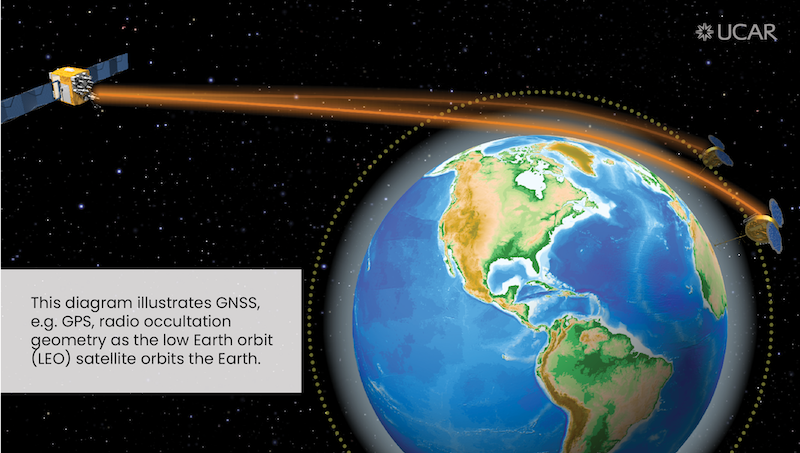Recently, NOAA updated the global forecast weather model (GFS) to version 16. This version had numerous enhancements including an upgrade in cloud physics and an increase in the number of vertical levels of the atmosphere for which weather parameters are calculated.
Another fascinating upgrade is planned for next week.
The version 16.1 upgrade will incorporate a significant improvement in the accuracy of various three dimensional atmospheric measurements (such as humidity, temperature, pressure) that go into the “initialization” — the starting point for each GFS model run.
Incredibly, the new atmospheric data will come from the radio signal of GPS satellites!
Basically, the signal transmitted by GPS satellites will be picked up by other low orbit satellites as the GPS signal travels through the atmosphere.
The technique, known as radio occultation, detects changes in the GPS radio signal as it passes through different atmospheric thicknesses and angles. The changes in the signal reveal the physical measurements of temperatures, pressure, humidity to higher precision..

This improvement in data input is expected improve GFS model forecast accuracy.
More information about radio occultation can be found here.
